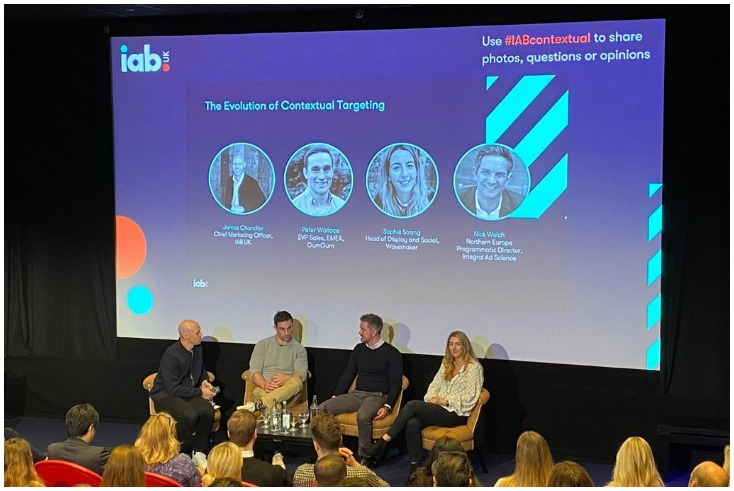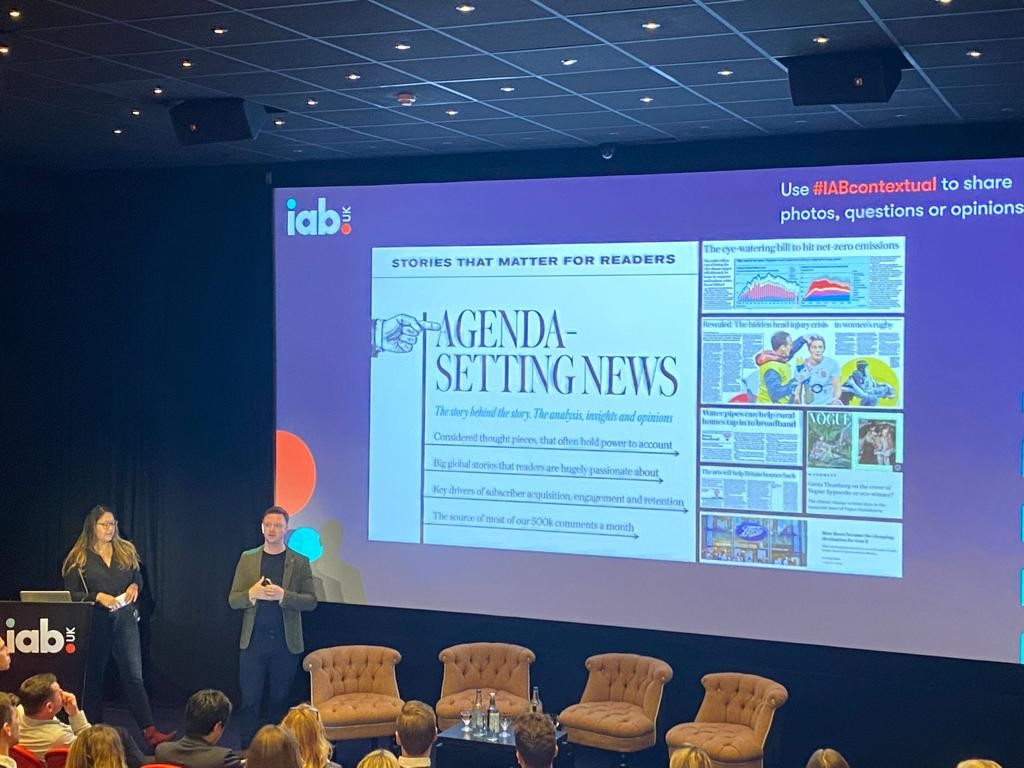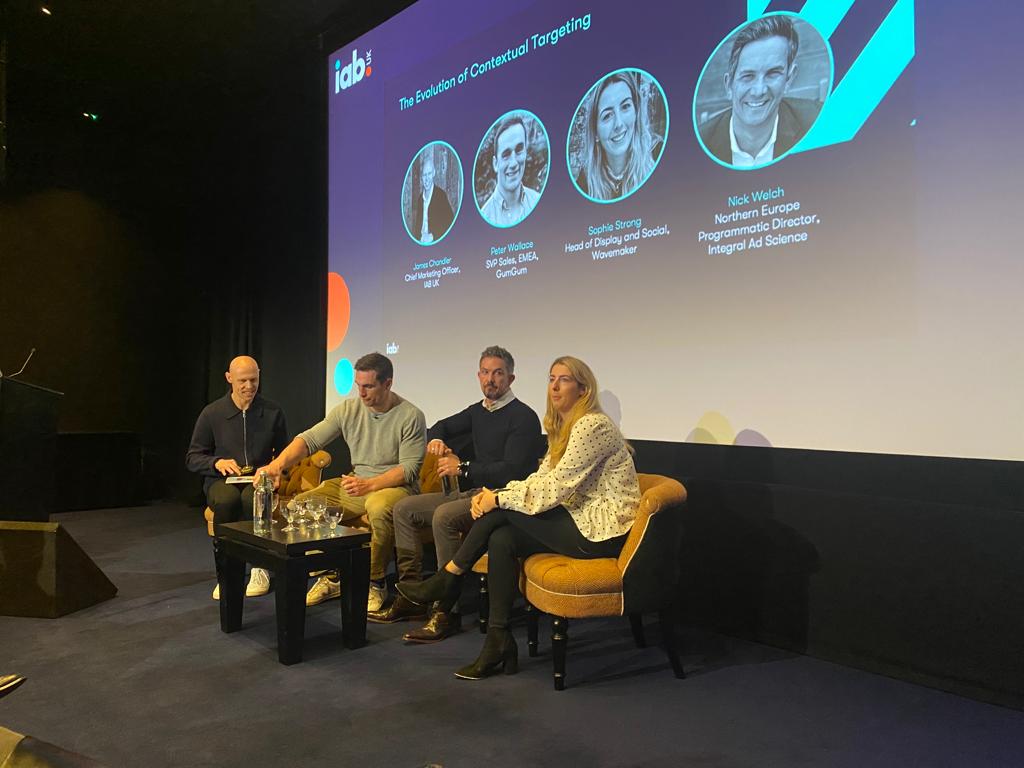Advertisers still too ‘timid’ over Covid and ‘hard news’ content

Marketers are still too timid and defensive to place ads next to hard news, including content about Covid-19, because of an over-reliance on keyword searches, an IAB UK conference heard yesterday.
Digital publishers are seeing millions of “unmonetised impressions” on suitable content, the Keeping up with Contextual conference was told yesterday .
For example, The Telegraph reported they have had 40 million “unmonetised impressions” on news and politics content.
This is despite some publishers using new technology and tools to ensure ads are not placed next to content deemed to be non-brand safe, such as The Evening Standard and The Independent that have begun using Mantis, an AI-powered tool created by Daily Mirror publisher Reach to prevent articles being unnecessarily block-listed from advertising.
Agenda-setting news a ‘missed opportunity’ for brands and advertisers
Anthony Crocker, head of campaign innovation and Samara Hocihara, head of campaign planning and operations from The Telegraph, spoke about opportunities for advertisers to place their ads with newsbrands.
Crocker said this was particularly important as “brand purpose” is very topical for consumers as they are “not stupid” and know what virtue-signalling and greenwashing look like.
He added that advertising budgets can push forwards responsible journalism and diversity and advertisers need not be timid around “hard news”.
Timidity around ‘hard news’

Expanding on this, Crocker commented The Telegraph‘s data showed advertisers would miss 94% of brand safe content if they did not want to put ads next to “environment” content. Meanwhile, he said the 40 million impressions that have gone “unmonetised” are because “brands did not want to target news and politics content”.
Crocker distinguished between agenda-setting news and breaking news, which could be useful for ad placement decisions. He described agenda-setting news as “the story behind the story- the glossy documentary rather than the news at 10”.
He added that news and politics should not be put together or avoided by advertisers as they have the longest page times and 86% of visitors to The Telegraph site come to news first before they move on to their personal passions such as fashion.
Less intrusive advertising with better results
Hocihara highlighted that by advertising contextually, advertisers can be less intrusive and create a better experience for readers, for example with shoppable formats that mean readers can stay on The Telegraph site, the Skylight which is their biggest advertising video format and Engage, its conversational ad format.
Other insight tools primed for contextual marketing Hocihara talked about were Telegraph Texture, its sentiment tracker, first-party targeting and entry customer data matching based on its subscriber model.
Crocker also mentioned brand attention as well as brand safety and brand impact as key metrics for this type of advertising.
Keyword searches are ‘redundant’

Peter Wallace, senior vice-president of sales in EMEA for GumGum, Nick Welch, northern Europe programmatic director at Integral Ad Science and Sophie Strong, head of display and social at WPP agency Wavemaker spoke about semantics and sentiment being paramount for contextual.
Leading on from this, Strong said it is “so critical” that we understand the “true meaning” of the content we advertise in which Wallace later spoke about with safe Covid content compared to unsafe Covid content.
Strong highlighted the telephone communications industry as a sector that does contextual advertising very well, pointing to the iPhone launches targeting tech magazine websites “aggressively” as an example.
Wallace made the point that contextual is more “in the moment” than audience data, stressing that it is possible to have a one-on-one connection with the content someone is reading at the time, rather than average audience data that looks at what you have been reading over the last 30 days.
Improved targeting, ROI and user experience
Welch added that contextual allows advertisers to be more accurate with their targeting and reach the consumer in the right environment with the right mindset if they are using the technology correctly. Not only that, but contextual delivers “real ROI” Welch said.
Strong said that using contextual advertising creates a better less “disruptive” user experience and added: “We want to use clever native formats, it is really important as it will improve performance and have a message that will resonate with the audience. We can see what pages they are spending time and how long they are spending.”
Welch stressed the importance of semantics and an accurate understanding of the emotional quality and sentiment of the page in contextual advertising technology, saying it was “the only way” to understand keywords, otherwise keyword searches do not work and are “redundant”
He also mentioned “contextual avoidance” being as important as contextual targeting, something echoed by Global and Acast with their podcast advertising recently.
The future of contextual advertising is even more ‘multi-platform’
Contextual advertising is entering new spaces and the technology is growing to do it, Strong spoke about Twitter launching contextual sponsorship and contextual going into other formats like gaming, while Welch announced Integral Ad Science’s partnership with TikTok on “ocular character vision”, making contextual “multi-modal”.
Strong concluded: “Contextual is a buzzword but it is important. It is something we [at Wavemaker] have been doing in our buying via direct and programmatic for a long time. The partners that stand out are ones that can talk about their own technology and also add their creative overlay and work closely with media agencies and creative.”
Jay Pinho, head of product management for brand safety at Oracle Advertising said in his presentation that a measurement solution must look at the meaning and the context not keywords in order not to miss out on compatible content, find “non-endemic topic” opportunities with high engagement to advertise against and not “kill scale”.
As an example, he said research from Oracle showed that 80% of pages that include the word coronavirus were safe to advertise on, especially as content changed over time from reporting death tolls to tips to working from home.
He added: “You need to get out of a defensive posture and the negative view. You can unlock opportunities while promoting brand safety and suitability. You can align yourself with positive content.”



